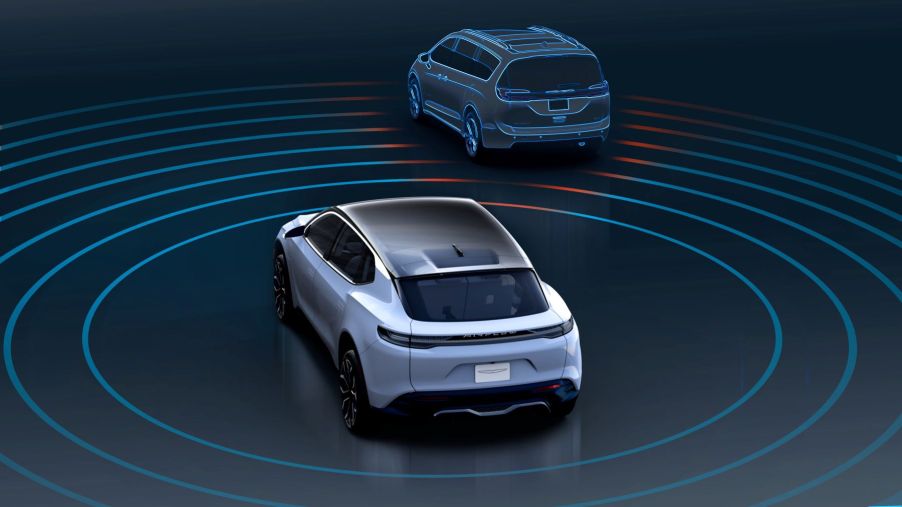
What Is STLA Brain Software From Stellantis?
The auto industry is constantly rearranging amid the latest acquisitions and mergers involving various car makers. Stellantis is a company that’s transformed into a global power, owning several popular brands across the world. Part of its plan to continue developing its line of products is with a series of software platforms collectively known as STLA Brain Software. The technology will further the idea of intelligent vehicles, and work has already begun to include these systems in its future and concept vehicles.
Stellantis owns many significant car companies around the world
Stellantis was formed due to a merger between Peugeot S.A (also known as the PSA Group) and Fiat Chrysler Automobiles (FCA). This was FCA’s second attempt at combining with another company. FCA initially tried to partner with Renault, reaching a provisional agreement before the French government and Nissan’s concerns over the deal forced it to be called off.
As a result, FCA switched paths and merged with PSA to create the fourth largest carmaker by volume in the world, with annual cost savings on global vehicle sales estimated at $4.2 billion. The name is derived from the Latin word “stello,” which translates to “he/her/it that brighten with stars.”
Stellantis currently owns the following brands:
- Abarth
- Alfa Romeo
- Chrysler
- Citroen
- Dodge
- DS Automobiles
- Fiat
- Fiat Professional
- Jeep
- Lancia
- Maserati
- Mopar
- Opel
- Peugeot
- Ram
- Vauxhall
Only seven of the brands – Chrysler, Alfa Romeo, Dodge, Fiat, Jeep, Maserati, and Ram – are sold in America, and some of them have struggled to retain prominence in recent years. However, having an extensive coalition of companies in its stable allows Stellantis to shape a larger piece of the market than it ever could by sharing development ideas between brands. The company announced in 2021 that it was increasing its production of electric vehicles going forward.
STLA Brain Software is a foundational part of Stellantis’ future

Stellantis is belatedly entering the EV game with STLA Brain Software, the company’s ambitious plan to transform the way each of its brands develops vehicles with several features that improve mobility technology and make the driving experience as smooth as possible.
CEO Carlos Tavares laid out Stellantis’ plans during a series of presentations at a company event called “Software Day,” according to WardsAuto. “Our electrification and software will support the shift to become a sustainable mobility tech company to lead the pack, leveraging the associated business growth with over-the-air features and services, and delivering the best experience to our customers,” Tavares said.
Here is the lowdown on the three systems:
STLA Brain
You could probably tell from the name, but the STLA Brain is the centerpiece of Stellantis’ technology. The service-oriented vehicle architecture is fully integrated into the cloud, allowing cars equipped with the software to more readily obtain feature updates without requiring a new hardware launch.
STLA SmartCockpit
The STLA SmartCockpit, powered by the Mobile Drive joint venture between Stellantis and Foxconn, intends to make each person’s car more customizable than ever before. It uses Amazon products technology and AI-based applications to create a “personalized living space” in the vehicle that Stellantis officials say could also be used for gaming or as an art space.
STLA AutoDrive
STLA AutoDrive is built to enable autonomous driving technology that will be upgraded through OTA updates. Stellantis is working with BMW for Level 2 and 3 capabilities, and the company is working with Waymo for Levels 4 and above.
STLA Brain Software is set to launch in 2024. If the systems work as promised, it could be a boon to some of Stellantis’ storied but stale brands, while also bringing in more revenue. Stellantis expects to generate $4.5 billion by 2026 and $22.7 billion by 2030, and you can read more about the services on the Stellantis website.
The Chrysler Airflow is a concept car that showcases the potential of STLA
One of the first examples of what the STLA Brain Software can do is found with the Chrysler Airflow, the all-electric concept vehicle that debuted at the 2022 CES. It remains to be seen if the car will ever go into production, but the brand is desperate for new models that excite prospective customers.
Chrysler’s imprint on the market has dramatically diminished in recent years, but the Airflow shows a possible way forward. The car is powered by a 118 kWh battery designed to provide a range of 400 miles on a single charge. The interior is spacious and sleek, accented by lighting that responds to individual moods. Each seat also comes with its own built-in camera. Level 3 autonomous driving tools will enable a hands-free mode when certain road and weather conditions are met.
The Airflow is an impressive idea for a car. Regardless of whether it gets made, it’s clear that Stellantis has big plans for STLA technology to power many vehicles in the near future.


